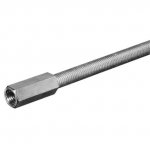Alwayslearningelec
Senior Member
- Location
- NJ
- Occupation
- Estimator
Was told 3/8" rod(any other sizes) really only come in 6' lengths and not 10'? Is that true and what do you buy/ recieve on the job site? Talking about rod for trapeze hangers.
Also, when do you use a rod coupling? When joining two peices of rod to make a particular length? I'd think if you had a 8' rod drop you would use a 10' peice and cut it????
Also, when do you use a rod coupling? When joining two peices of rod to make a particular length? I'd think if you had a 8' rod drop you would use a 10' peice and cut it????

